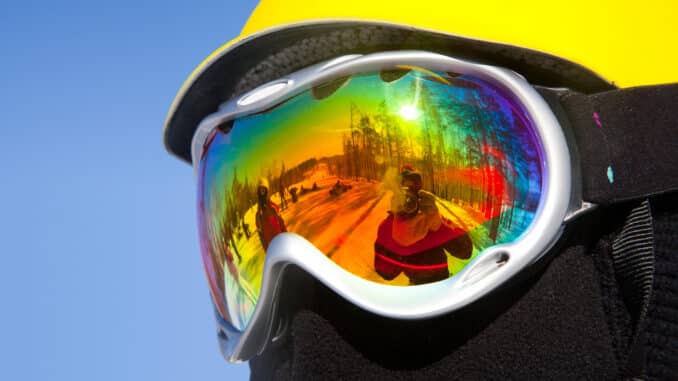
Tips for choosing ski goggles
What is important when choosing a great pair of ski goggles? A good fit, information on the different type of lenses and the latest goggle information giving you all the latest technology about the best goggles you need when taking to the slopes.
Goggles that fit your helmet
Almost all goggles are compatible with most helmets but it is important to check they fit well together. Some styles and shapes of goggles will fit better so always take your helmet with you when buying new goggles. Your goggles should have a rubber coating inside the straps and this helps to grip onto the helmet. Some goggle manufactures make helmets too and will try to sell you them together, all goggles should fit most helmets it’s your choice.
Moveable hinges
Look at the strap which is attached to the goggle frame, a good strap can make a huge difference to a great fit with the helmet, ideally they are joined by a plastic hinge that moves and is not fixed directly to the frame. This means it has greater flexibility and the pressure is evenly spread across the face making it more comfortable.
Goggle frame foam
This is the seal that the foam forms between you an the frame of the goggle. It protects against impact, the elements and to wick moisture away from your skin. There are usually three layers of foam, next to the face is extra soft foam for comfort, solid and durable foam is next to the frame for protection and lastly in the middle is malleable for precise moulding to contour the face. In some cases, the foam layers have the latest technology to stop goggles from steaming up.
Frameless Goggles
These are ideal especially for the smaller face giving much better peripheral vision.
Lens shapes
There are basically two lens shapes, however, new technology is transforming lens shapes. Spherical lenses are rounded, these match the shape of the eye and gives a natural view. There is a new version called Toric, these curve to give a realistic view and are the latest out. The flatter lens is called Cylindrical, they curve vertically are generally more affordable but the peripheral vision could be distorted. Choose the best lens for you.
Changing the lenses
Sometimes goggles come with two different lenses for different conditions and you can swap them around. They should slide in and out easily either by sliders or buttons, magnets or pins ensure your goggles can perform this smoothly. It should be easy to do and some of the latest systems are so easy you can do it whilst you are still wearing them.
Colour of lenses
Different weather conditions mean using different coloured lenses. For cloudy days yellow is the best lens colour as it allows more light through the lens. Brown is good for sunny days reducing the light through the lens. The VLT (visible light transmission) rating on the lens tells you how much light comes through, the lower the number the more suitable for sunny days. Lens treatments such as polarisation or mirroring cut glare and are ideal for sunny days reducing the bright reflected light from the snow. The latest technology is superior lenses that allow some blue light through which boosts definition in all conditions.
Photochromatic lenses
If you don’t want to change the lenses of your goggles then opt for photochromatic lenses that change from light to dark rapidly and back again. These lenses are now very popular due to the speed at how they change within seconds.
Anti-fog and UV protection
Goggles should have 100{ee249c389c0a3010527b46b480fd209181c2a0c0f809aae77a1106d5c9c21271} screen out of harmful UV (ultraviolet) rays and the lenses coating helps prevent scratches and fogging. Look for anti-fog features, venting helps to prevent fog inside the lens and an extra coating repels water droplets forming. You need to look after your goggles storing them in bags to protect them and clean with lens clothes as you would your everyday glasses.
Frame vents
Look for extra frame vents they aid air flow through the goggles as you ski to help stop steaming up.
Your vision is important when skiing or snowboarding, choose your goggles wisely, good lenses and a good fit.
